What to do if there is a crust on the baby's scalp?
A scaly scalp is not a very pleasant sight. In hairy babies, we often encounter it when it covers a larger area. It is not easy to notice at first, but it is clearly visible when the light falls on it.
We would like to emphasize at the beginning of our article that this lesion is not pathological and is experienced by many babies. Its treatment is usually simple, and it can only be a problem if we see signs of superinfection. However, the chance of this is small with proper care.
Let's see what causes it, what it looks like, how it feels for the baby, and what we can do about it!
What causes the cosmos?

A baby's scalp produces increased sebum. The dead skin cells that are naturally shed and are about to fall off get stuck in the overproduced sebum, creating small, continuous sheets that stick to the scalp and can cause wounds if removed.
Although its name suggests it to many, the development of cosmosis (infantile seborrheic dermatitis) has nothing to do with hygiene and is not contagious, so children cannot pass it on to each other, so they can go out into the community without any problems. Its development is relatively common in babies as young as a few weeks old, but it can persist in a milder form until preschool age.
As a parent, you should not be ashamed of the symptoms or feel uncomfortable about them, because the appearance of the disorder is not due to a lack of parental care or the parent's fault.
Girls and boys may be affected in equal proportions, however, children with family members with eczema or asthma may be more likely to develop cosmo.
Source: Health Line NNGYK , Pediatric Center
Does the baby get bothered by the cosmos?
This symptom is completely harmless. It does not cause pain, inflammation, or itching, so the baby does not feel it on his scalp. He may notice the treatments, which, if performed properly and gently, do not cause him any discomfort. The phenomenon can be more aesthetically disturbing.
The cosmos often goes away on its own within weeks or months, but there are children who are prone to it until they are a few years old. In their case, hair washing is done according to the established routine - with preventive procedures - which can keep the removed cosmos completely away. However, it is worth showing the symptoms that persist for a long time to the pediatrician.
What does a flaky scalp look like?
It usually appears on the baby's scalp as a yellowish-brownish-reddish oily layer. Its surface can be smoother or scaly, dry, and flaky. It develops gradually. It is usually most extensive on the top of the head, but it can also appear on the face, around the eyebrows, and around the ears. In these areas, it is usually not thick, but rather in brownish patches - similar to dense freckles. The extent of the layers can be sparse, but if left untreated, it can cover quite large areas of the baby's head in a thick layer.
When these dry little scales fall off, the skin underneath may be red, even sore, and you may notice hair in the fallen pieces. Don't worry! The hair that falls out with Cosmos will grow back.
Source: Dr. Hunor Novák
Let's remove the cosmos gently!

Since it is not an aggressive problem and does not have any harmful effects on health, it can be treated gently and slowly. The best solution for this is oil loosening and removal.
How do we do it?
It is necessary to purchase an oil suitable for babies, preferably with a natural composition, and a small cap that you do not regret oiling for the purpose. Before bathing the child, generously apply the oil to the baby's scalp, then put the cap on to help the oil work and keep it warm. The oil loosens the greasy material of the baby's hair, especially in the upper layer.

Leave the oil on the baby's head for 20-30 minutes - make sure the room is warm enough, as the child's head will be wet - and then, while washing the hair, very carefully wipe the oil off the baby's head with a cloth, cotton diaper, or even a softer flannel diaper. For babies under one year old, be careful around the well.
There are various types of lice combs available, which you can try if you can find a reliable product that is gentle on your baby's head. You can also choose over-the-counter lice creams, which have a similar effect to oils. To choose the right product, ask your pediatrician for advice!
Don't be surprised if not all the layers come off immediately! This is not a problem, as the already formed crust needs a few such occasions to slowly loosen. Never rub or cause damage to the scalp by forcing the scales to come off.
Source: Dr. Hunor Novák
Cosmo does not damage baby's hair
We may be scared when we find hairs in the removed cosmos. Don't worry, it won't be a problem, your child's hair won't become thinner or grow more difficult. Cosmos doesn't damage the hair follicles, it just spreads on the surface of the skin, and since it's a sticky substance, the hairs stick to it. Later, they will grow back.
What should we not do with a flaky scalp?
Do not start peeling off the dry pieces. This can cause skin damage, which the child would also report, as it is an unpleasant feeling for them too. Do not cause unnecessary wounds on the scalp, as they can be painful and can also allow pathogens to enter.
You don't want to remove it all during the very first wash. Be patient! With proper oil treatment, it usually completely "wears off" from the scalp after 3-4 times.
What is the difference between cosmos and eczema?
It should be noted that the symptoms of the two conditions are similar. Eczema also causes red, flaky skin, but it can be very itchy and painful for the baby to scratch. The two symptoms may seem similar at first glance, but they are actually unrelated.
Source: Pediatric Center
When should we see a doctor?

Rarely, the cosmos can also become infected, and a fungal or bacterial infection can develop on its base. Especially if it is not removed in time. It can become sore, although it does not itch. Most of us seek advice from the health visitor or pediatrician even for harmless symptoms, so this rarely happens.
For severe or long-lasting, inflammatory boils, your doctor may prescribe a steroid cream, antifungal medication, shampoo, or lotion. If the boil doesn't improve, has an unpleasant odor, or is bleeding, you should definitely consider an infection.
In addition, the area may be swollen, red, widespread, or itchy. If it persists after 12 months of age, you should still see your pediatrician.
Source: Dr. Hunor Novák , Health Line NNGYK
Can the formation of cosmos be prevented?
Until we experience dandruff, we cannot and should not try to prevent it. Because it is simply not possible. If it does appear, prevention actually means preventing recurrence after treatment. To do this, we must constantly monitor the baby's scalp and reapply the oil removal when we see new brown spots. In this case, the thin layer can be removed during a hair wash.
































